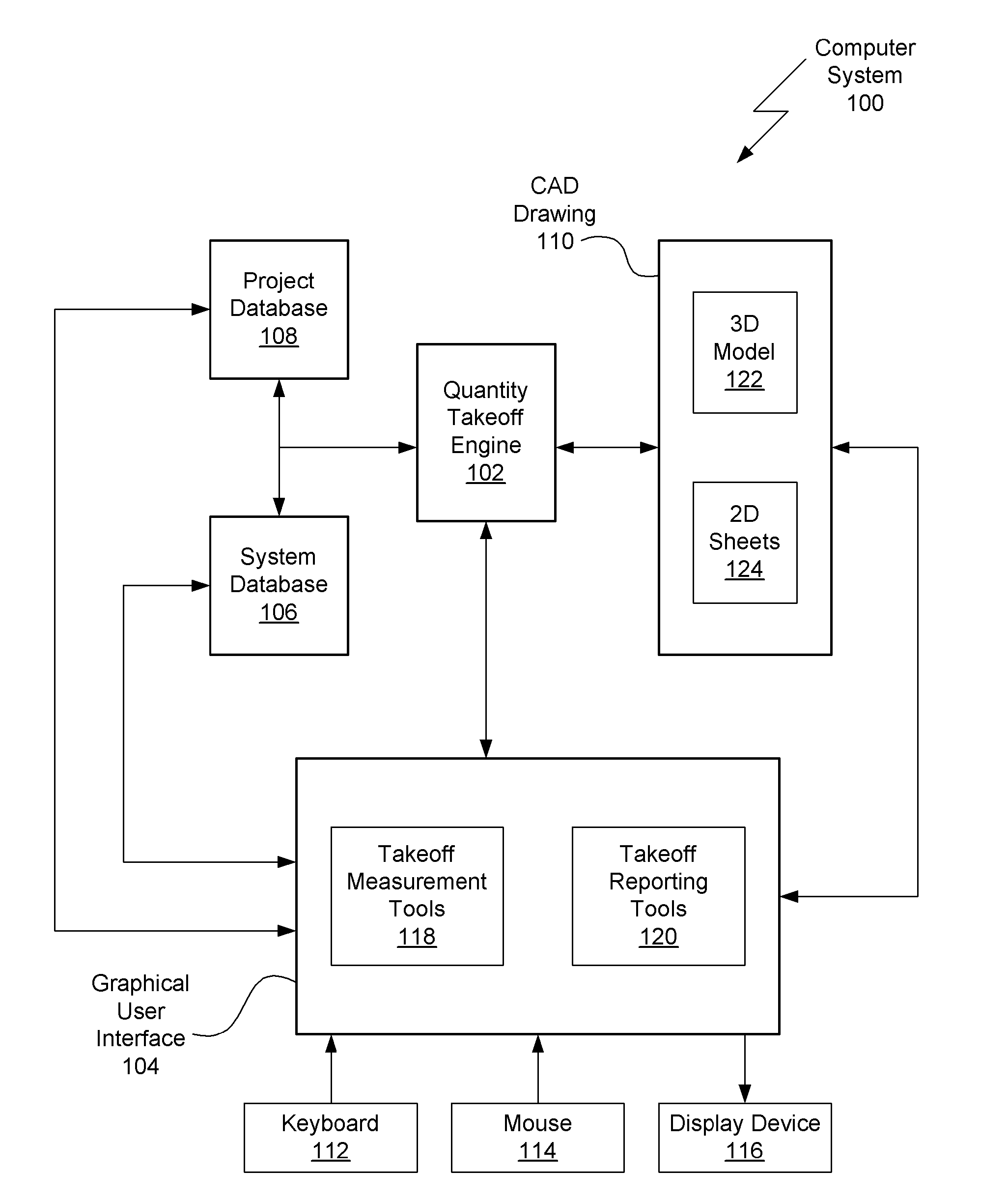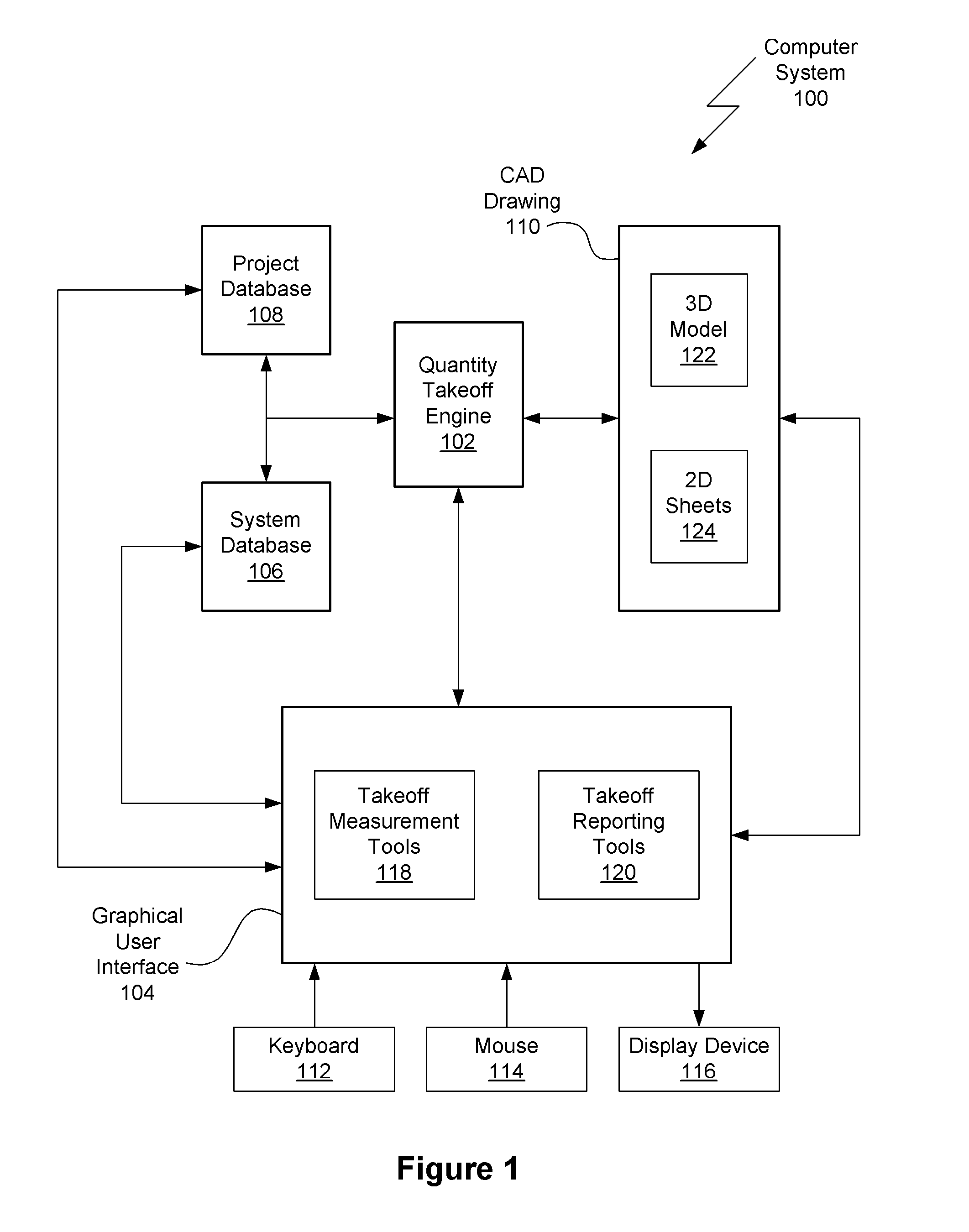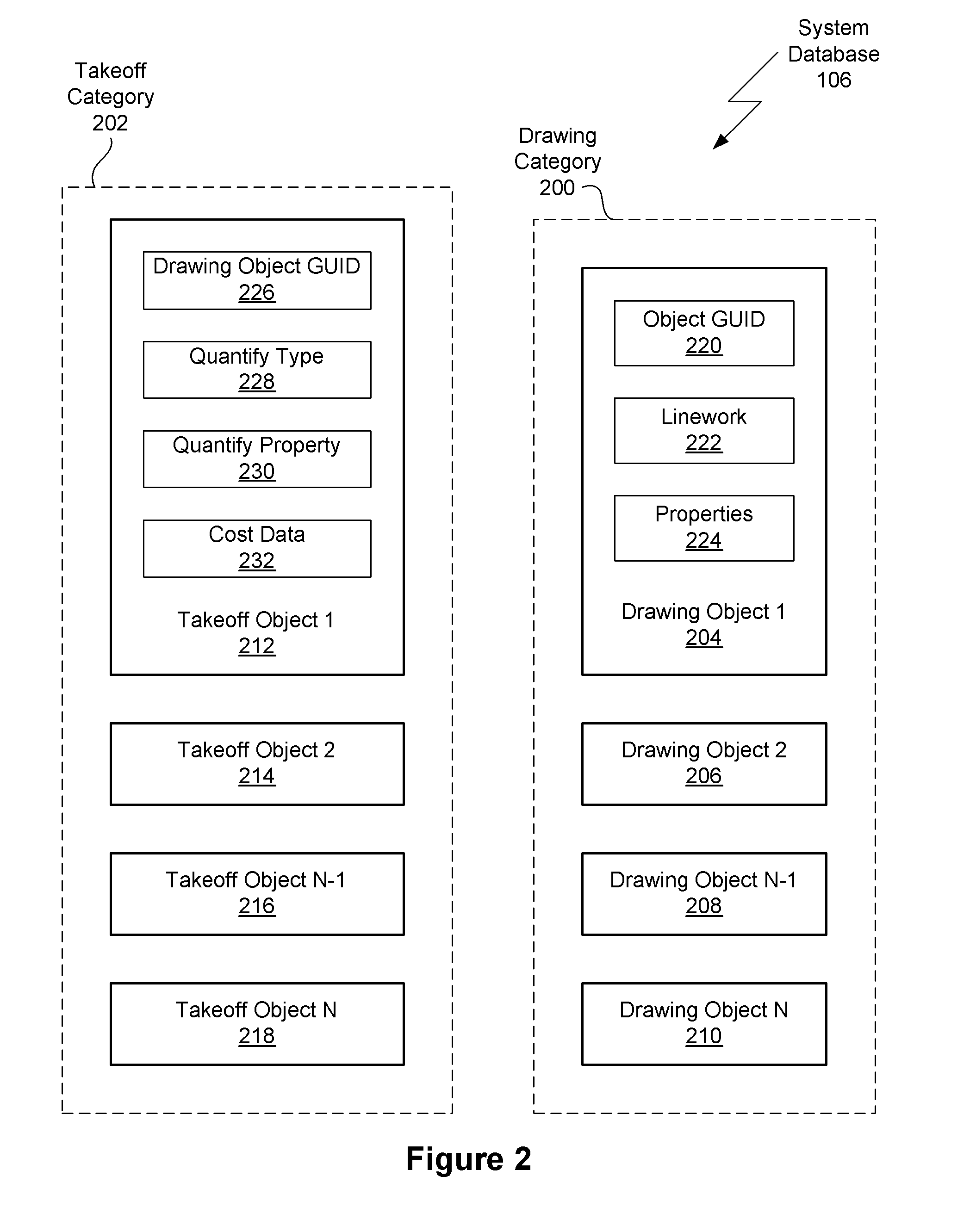Method for semi-automatic quantity takeoff from computer aided design drawings
a technology of computer aided design and quantity takeoff, applied in the field of computer software, can solve the problems of reducing the time required to perform cost estimates and inaccurate project cost estimates, and achieve the effects of increasing capability, increasing consistency between projects, and reducing the time required to perform takeo
- Summary
- Abstract
- Description
- Claims
- Application Information
AI Technical Summary
Benefits of technology
Problems solved by technology
Method used
Image
Examples
first embodiment
[0066]In a first embodiment, the user selects an instance and defines an associated takeoff object. The quantity takeoff engine is configured to use the information in this takeoff object to identify all associated instances in the CAD drawing, quantify these instances, calculate the cost of these instances, and add the quantities and costs to the takeoff report. The user may continue to select instances until all instances in the project have been quantified, thereby generating an estimate for the total project cost. Advantageously, the takeoff measurement tools automatically quantify each instance, thereby increasing the accuracy of the measurements as compared to manual techniques, such as using a digitizer. Moreover, the takeoff calculations, such as labor cost equations, are also performed automatically, further reducing the likelihood of errors in the project cost estimate.
[0067]In a second embodiment, the information in the CAD drawing is used to create a takeoff tree of unde...
third embodiment
[0068]In a third embodiment, the quantity takeoff engine is configured to interact with a system database that may contain takeoff objects. The quantity takeoff engine evaluates each instance in the CAD drawing and attempts to map each instance to a corresponding takeoff object in the system database. If there are any instances that are not mapped to a takeoff object, the user is prompted to define additional takeoff objects. The new takeoff objects are added to the system database and the quantity takeoff engine attempts to map the previously unmapped instances to the newly defined takeoff objects. When all instances are successfully mapped, the information in the takeoff objects is used to quantify each instance and subsequently calculate the cost of each instance. These quantities and costs are used to generate a takeoff report for the entire CAD drawing, and thereby a complete estimate of project cost. Advantageously, utilizing the system database in this fashion allows takeoff ...
PUM
 Login to View More
Login to View More Abstract
Description
Claims
Application Information
 Login to View More
Login to View More - R&D
- Intellectual Property
- Life Sciences
- Materials
- Tech Scout
- Unparalleled Data Quality
- Higher Quality Content
- 60% Fewer Hallucinations
Browse by: Latest US Patents, China's latest patents, Technical Efficacy Thesaurus, Application Domain, Technology Topic, Popular Technical Reports.
© 2025 PatSnap. All rights reserved.Legal|Privacy policy|Modern Slavery Act Transparency Statement|Sitemap|About US| Contact US: help@patsnap.com



